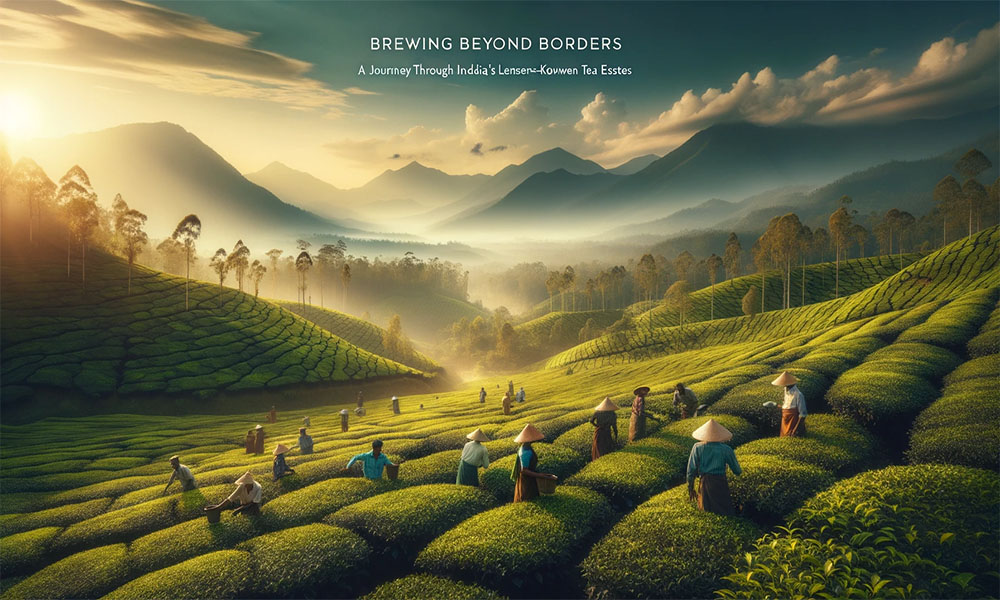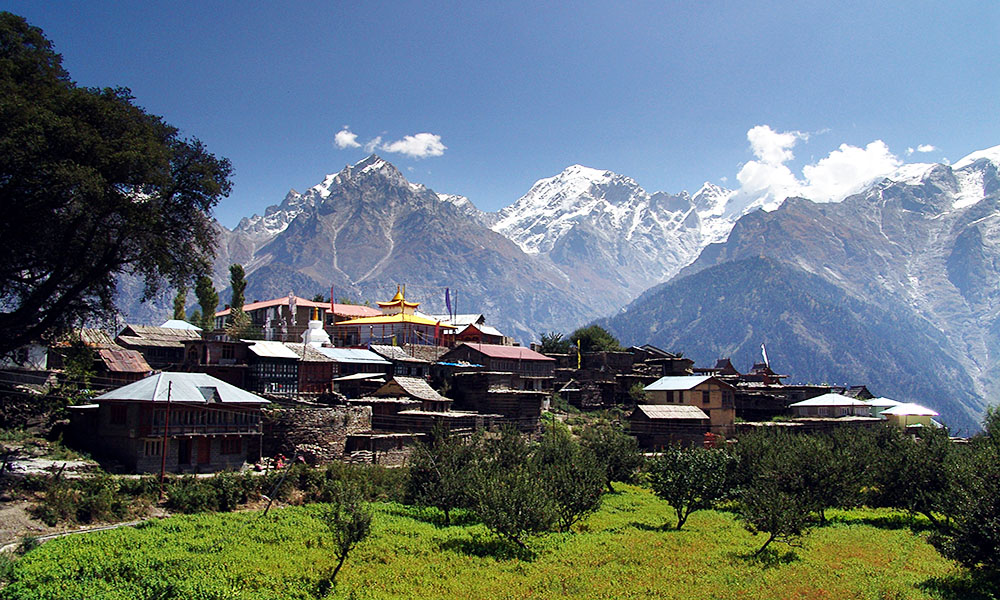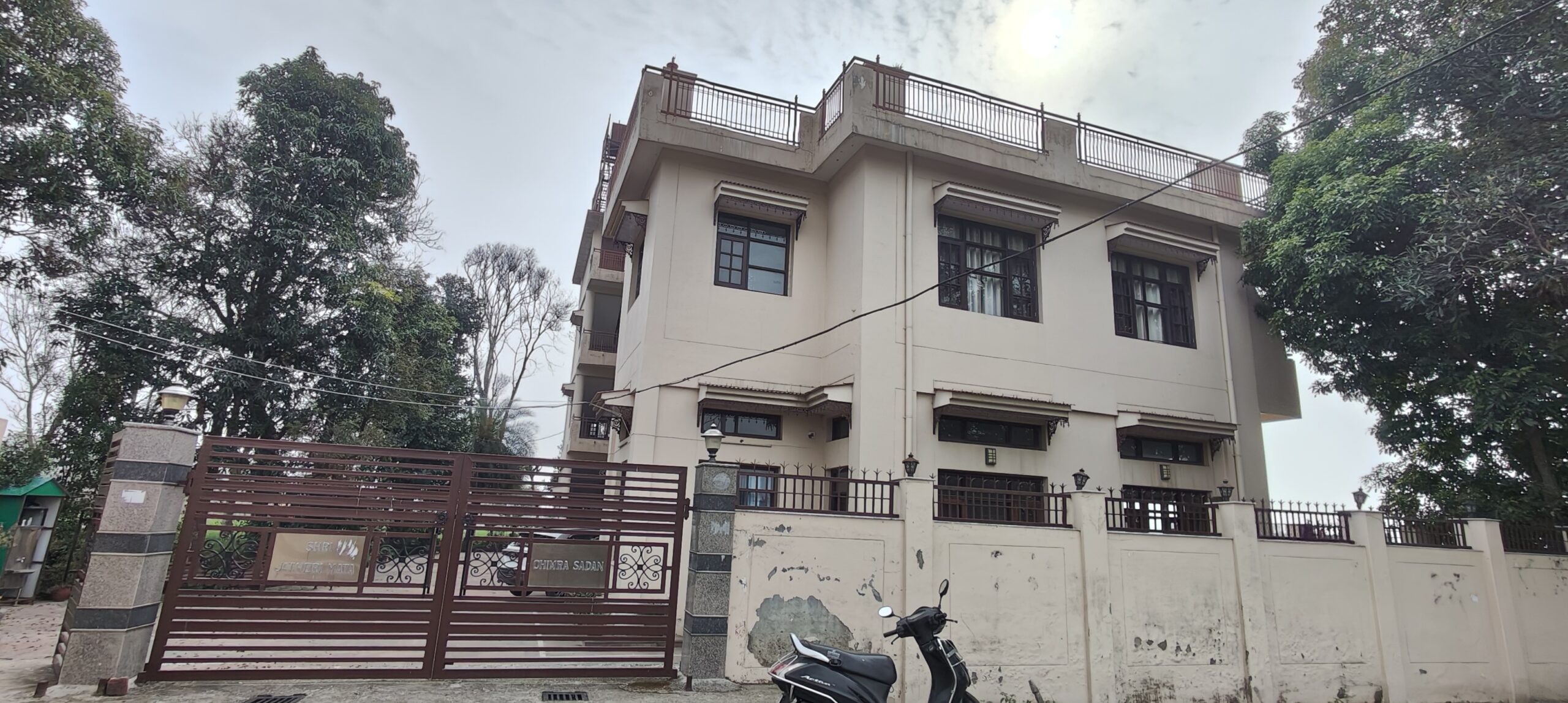Embarking on a journey through the verdant landscapes of India, one cannot help but be captivated by the aromatic allure of its tea gardens, a testament to the country’s rich legacy in tea cultivation. While the famed terrains of Darjeeling and Assam have long held the spotlight, there exists a myriad of lesser-known tea estates, each with its own unique brew, waiting to be discovered by the discerning traveler. From the tranquil Nilgiris to the robust flavors of Dooars and Terai, these hidden gems offer not just a cup, but a sensory voyage steeped in tradition, culture and breathtaking scenery. In this exploration, we delve into “Brewing Beyond Borders,” inviting you to traverse the untrodden paths of India’s tea trails and unravel the stories and flavors that brew beyond the familiar confines.

The Tranquil Nilgiris: Brewing Beyond Borders in the Blue Mountains
Nestled amidst the serenity of the Western Ghats, the Nilgiri Hills, fondly known as the Blue Mountains, beckon tea enthusiasts to explore a legacy that has been brewing beyond borders for centuries. The region, characterized by its undulating hills and cool climate, provides an idyllic setting for tea cultivation. The Nilgiri teas are renowned for their fragrant, brisk and bright characteristics, making them a favored choice for many connoisseurs.
The tea gardens here, such as the Coonoor Tea Estate and the Highfield Tea Factory, stand as testimony to a tradition that seamlessly blends the old with the new. Visitors to these estates are greeted with panoramic vistas of neatly manicured tea bushes against the backdrop of the misty mountains. A walk through these gardens not only reveals the intricate process of tea cultivation but also offers an opportunity to sample and savor the diverse flavors that are distinct to this region.
Sikkim’s Organic Brews: A Symphony of Tradition and Sustainability
Venturing further north, the picturesque state of Sikkim offers a unique tea experience that harmoniously blends tradition and sustainability. The Temi Tea Garden in Sikkim, established in the 1960s, is celebrated for its commitment to organic farming practices. Brewing beyond borders, this estate has carved a niche for itself in the global tea market with its certified organic produce.
The teas from Sikkim are cherished for their floral and delicate notes and the Temi Tea Garden, spanning across lush slopes, is no exception. A visit to this estate allows travelers to witness the meticulous care that goes into crafting every cup, from the hand-plucking of leaves to their careful processing. The commitment to organic practices ensures that the tea not only tastes exquisite but also pays homage to the rich biodiversity of the region.
The Aromatic Kangra Valley: Brewing Beyond Borders in Himachal’s Hidden Gem
Venturing into the heart of Himachal Pradesh, the Kangra Valley emerges as a treasure trove for tea enthusiasts. With a history that dates back to the mid-19th century, the tea estates in Kangra are known for their distinctive light and fragrant brews, which stand in contrast to the robust flavors of Assam and Darjeeling teas.
Kangra: Charting the Course to Become Tourism Capital of Himachal
The Kangra Valley, cradled in the lap of the Dhauladhar range, presents an enchanting landscape where tea gardens such as the Palampur Cooperative Tea Factory and the Wah Tea Estate thrive. The unique terroir of the region, enriched by the gentle slopes and the perennial streams flowing from the mountains, imparts a special character to the tea. Visitors exploring these estates are treated to a visual and sensory feast, as they walk amidst rows of tea bushes, witnessing the art of tea-making that has been brewing beyond borders and generations.
In both Sikkim and Kangra Valley, the commitment to quality and tradition in tea cultivation invites enthusiasts to explore flavors and experiences that transcend the ordinary, celebrating a legacy that has been meticulously preserved and nurtured.
Dooars and Terai: A Melody of Robust Flavors Brewing Beyond Borders
Stretching across the floodplains of the Brahmaputra in West Bengal and Assam, the regions of Dooars and Terai unveil a tapestry of tea gardens known for their bold and robust flavors. The tea estates here, bathed in the rich alluvial soil and nourished by the rivers, produce teas that are cherished for their strong, bright and full-bodied character.
Tea gardens such as the Goomtee Tea Estate in Kurseong and the Mahanadi Tea Estate in Terai are celebrated for their exquisite produce. A visit to these estates unravels the meticulous journey of the tea leaf, from the verdant fields to the steaming cup. The experience is heightened by the scenic beauty of the region, where the lush tea gardens are often framed by the majestic Himalayas in the backdrop. Here, the tradition of tea cultivation is not just a practice but a melody of flavors that has been brewing beyond borders.
Monsooned Malabar: An Ode to the Rain-Kissed Coast
Along the southwestern coast of India, the Monsooned Malabar tea tells a unique tale of a brew that is intimately intertwined with the seasonal monsoons. The practice of monsooning involves exposing the harvested tea leaves to the moist winds of the monsoon season, resulting in a distinctive flavor profile that is mellow, sweet and reminiscent of the rain-kissed earth.
Estates such as the Tata Coffee’s Nullore Estate in Coorg specialize in creating this unique tea, offering a sensory journey that is deeply connected to the rhythms of nature. The process of monsooning imparts a golden hue to the leaves and a characteristic taste that has been appreciated by tea connoisseurs across the globe. In this ode to the rain-kissed coast, the Monsooned Malabar tea stands as a testament to the innovative spirit of Indian tea cultivation, brewing beyond borders to create a symphony of flavors.
In both Dooars and Terai, as well as the Monsooned Malabar, the commitment to tradition and innovation crafts a narrative that invites tea enthusiasts to explore regions and flavors that are at once familiar and refreshingly new.
The Verdant Valleys of Munnar: A Symphony of Green Brewing Beyond Borders
Nestled in the Western Ghats of Kerala, the rolling hills of Munnar invite tea aficionados to explore a world where emerald tea gardens stretch as far as the eye can see. Munnar, with its cool climate and rich soil, has been a flourishing hub for tea cultivation since the late 19th century. The estates here, such as the Kolukkumalai Tea Estate, boast of being among the highest tea plantations in the world.
Visitors to Munnar are treated to a spectacle of vibrant greenery, interspersed with an array of flora and fauna. The tea produced here is known for its aromatic and finely balanced flavor. From the gentle slopes of the Lockhart Tea Factory to the scenic vistas at the Kannan Devan Hills Plantations, Munnar’s tea gardens narrate a story of passion and perfection, brewing beyond borders to craft a legacy that resonates with tea lovers globally.
The Mystical Meghalaya: Brewing Beyond Borders in the Abode of Clouds
In the northeastern realm of India, the state of Meghalaya, aptly named the ‘Abode of Clouds’, offers a tea experience steeped in mystique and tradition. The tea estates here, such as the Lakyrsiew Tea Estate, are relatively young compared to their counterparts in Assam and Darjeeling but have quickly gained recognition for their unique and exceptional teas.
The high-altitude gardens in Meghalaya, shrouded in mist and nourished by abundant rainfall, yield teas with a delicate, floral and brisk character. The verdant landscape, rich in biodiversity, adds a distinctive charm to the tea experience. Visitors exploring these estates are not only introduced to the intricate art of tea-making but also to the rich cultural tapestry of the indigenous communities for whom tea cultivation is a way of life, brewing beyond borders and seamlessly blending tradition with modernity.
In both Munnar and Meghalaya, the tea estates offer a rich palette of experiences that go beyond mere tasting, inviting enthusiasts to explore the landscapes, traditions and stories that make each cup of tea a journey in itself.
Nilgiri’s Blue Mountains: A Serenade of Fragrance Brewing Beyond Borders
In the southern part of India, the Nilgiri Hills, often referred to as the ‘Blue Mountains’, beckon tea enthusiasts to explore a world where the air is fragrantly infused with the scent of tea leaves. The tea estates in Nilgiri, such as the Coonoor Tea Estate and the Glendale Estate, are celebrated for their fragrant, brisk and bright brews that captivate the senses.
The landscapes here are a visual treat, with the tea gardens gracefully draping the slopes and valleys. Nilgiri teas, known for their aromatic and floral notes, have found admirers across the globe. A journey through these estates is an exploration of the fine art of tea cultivation, where the legacy of tea-making is not just preserved but is continually evolving, brewing beyond borders to meet the discerning tastes of connoisseurs.
The Wilderness of Arunachal Pradesh: An Uncharted Tea Odyssey
Venturing into the northeastern frontier, Arunachal Pradesh offers an uncharted tea experience that is deeply rooted in tradition and the wilderness. The region is home to indigenous tribes who have been cultivating tea for generations, often in wild or semi-wild conditions, creating brews that are as untamed and vibrant as the landscapes themselves.
The tea gardens here, such as those in the Singpho and Tangsa communities, produce teas that are unique and offer a taste of the wilderness. Visitors to Arunachal Pradesh can explore these traditional tea-making practices, where leaves are often sun-dried and smoked, crafting flavors that are bold and distinctive. In this uncharted odyssey, the tea experience is an intimate communion with nature and tradition, brewing beyond borders and offering a sip of the wild and the untamed.
Journey through Bihar: Reviving a Legacy
Moving towards the heartland of India, Bihar emerges as an unexpected yet delightful destination for tea enthusiasts. Historically, Bihar has been known for its contribution to tea cultivation and in recent times, efforts have been made to revive and rejuvenate the tea estates in regions like Kishanganj.
Visitors exploring the tea gardens in Bihar are introduced to a legacy that is being lovingly revived. The teas here are characterized by a strong flavor and bright liquor, reminiscent of the robustness of the region’s cultural heritage. A journey through Bihar’s tea gardens is not just a tasting expedition but a witness to the revival of a tradition that has been brewing beyond borders and time.
In Nilgiri, Arunachal Pradesh and Bihar, the diverse landscapes and traditions craft a narrative that invites tea enthusiasts to explore the multifaceted dimensions of Indian tea cultivation, each region offering a unique story encapsulated in every cup.
Tea Tasting and Tourism
Visiting tea estates, such as the famous Darjeeling tea plantations in India or the scenic Cameron Highlands in Malaysia, offers a captivating and immersive experience that allows tourists to delve into the intricate world of tea production. These estates, set amidst lush, verdant hills, provide a picturesque backdrop that enhances the overall sensory experience.
Upon arrival at an estate like the Glenburn Tea Estate in Darjeeling, visitors are usually greeted with a guided tour. Knowledgeable guides lead them through rows of meticulously maintained tea bushes, explaining the differences between varieties such as Assam, Darjeeling and Oolong. They detail the ideal conditions for growth, which include specific altitudes and climates and the intricate process of harvesting the leaves. Some estates, like the BOH Tea Plantation in Cameron Highlands, allow tourists to partake in the plucking of tea leaves, offering a hands-on understanding of the initial stage of tea production.
Tea tasting sessions are a highlight of these visits. In elegantly set-up tasting rooms at estates like the Makaibari Tea Estate in Darjeeling, visitors are introduced to an array of tea varieties, from the robust Assam to the delicate White tea. A tea sommelier often guides the session, explaining the nuances of each tea, including the aroma, flavor and appearance of the brewed leaves. Tourists can learn how to discern the subtle differences between teas, such as the smoky flavor of Lapsang Souchong or the floral notes of a high-quality Oolong.
Staying within the tea estates is another facet of this immersive experience. Estates like the Castlereagh Bungalow in Sri Lanka’s Ceylon tea region offer accommodations that range from cozy homestays to luxurious bungalows. These stays provide panoramic views of the tea gardens and surrounding landscapes, allowing tourists to wake up to the sight of dew-kissed tea leaves and the sounds of nature. The accommodations, often reminiscent of colonial architecture, are designed to offer comfort while keeping the essence of the tea estate intact.
By immersing themselves in the tea-making process at these renowned estates, tourists don’t just witness, but actively participate in, the journey of the tea leaf from the plant to the cup. This enriching experience allows them to appreciate the craftsmanship, tradition and passion that goes into creating every cup of tea. Such visits often leave tourists with not just memories, but also a newfound appreciation for the beverage that graces their tables daily.
In wrapping up our aromatic journey, it’s essential to underscore the vibrant tapestry of tea cultures that India, in its vast expanse, cradles within its borders. These traditions, steeped in history and artistry, are “Brewing Beyond Borders,” seamlessly merging the boundaries of regions, communities and even generations. From the robust Assam blends to the delicate Darjeeling and the herbal infusions of the tribal communities, there is a symphony of flavors and narratives waiting to be explored.
“Brewing Beyond Borders” is more than just an exploration of tea; it’s an invitation to traverse the diverse landscapes of India, immersing oneself in the myriad of stories each cup narrates. The lesser-known tea cultures within India, often overshadowed by more commercial counterparts, provide a rich tapestry of experiences that transcend the routine and familiar. By delving into these aromatic trails, one doesn’t just savor a beverage but partakes in a cultural dialogue that spans centuries.
In conclusion, embarking on this exploration is not merely about discovering new flavors but about fostering a deeper appreciation for the nuances and diversity that exist within the realm of Indian tea cultures. So, as you sip on your next cup of tea, remember that you are partaking in a tradition that is continually “Brewing Beyond Borders,” inviting you to explore, appreciate and celebrate the rich diversity of India’s tea heritage.
Tea enthusiasts, your experiences are like the delicate notes in a cup of the finest tea—each one unique, enriching and deeply personal. We invite you to share your own adventures of traversing the verdant slopes of lesser-known tea estates or savoring distinctive brews from the hidden corners of our vast landscapes.
Have you ever stumbled upon a quaint tea garden, shrouded in mist and brimming with stories untold? Perhaps you’ve tasted a brew so unique, it transported you to a different place and time. These are experiences that deserve to be shared and celebrated!
By sharing your tea tales in our comment section, you not only contribute to a mosaic of rich, aromatic narratives but also help shine a spotlight on these hidden gems and exquisite brews. So, let’s create a tapestry of tea stories that transcend regions and resonate with fellow tea lovers. Pour yourself a cup and pen down your experiences. Let’s traverse these aromatic trails together, savoring each note and narrating stories that steep like a fine tea, enriching us all


